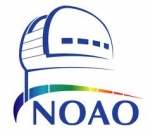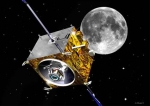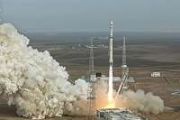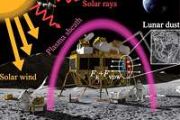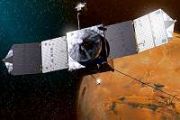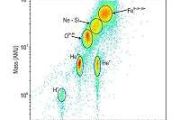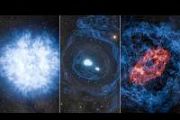Displaying items by tag: infrared
National Optical Astronomy Observatory (NOAO)
The National Optical Astronomy Observatory (NOAO) is the United States national observatory for ground based night time ultraviolet-optical-infrared (OUVIR) astronomy. The National Science Foundation (NSF) funds NOAO to provide forefront astronomical research facilities for US astronomers. However, professional astronomers from any country in the world may apply to use the telescopes operated by NOAO under the NSF's "open skies" policy. Astronomers submit proposals for peer review to gain access to the telescopes which are scheduled every night of the year for observations (with the exception of Christmas and New Year's Eve).
The NOAO headquarters are located in Tucson, Arizona and are co-located with the headquarters of the National Solar Observatory. The NOAO is operated by the Association of Universities for Research in Astronomy (AURA), under a cooperative agreement with the NSF.
Wide-field Infrared Survey Explorer (WISE)
Wide-field Infrared Survey Explorer (WISE) is a NASA infrared-wavelength astronomical space telescope launched on December 14, 2009, and decommissioned/hibernated on February 17, 2011 when its transmitter was turned off.
WISE was an Earth-orbiting satellite with a 40 cm (16 in) diameter infrared telescope, which performed an all-sky astronomical survey with images in 3.4, 4.6, 12 and 22 μm wavelength range bands, over 10 months. The initial mission length was limited by its hydrogen coolant, but a secondary post-cryogenic mission continued for four more months.
SMART-1
SMART-1 was the first European Lunar mission and a technology demonstrator of Deep Space Electric Propulsion.
It was launched in October 2003, reached the moon observation orbit in 2005 and carried out lunar science experiment till controlled crash on the lunar surface in September 2006.
SOFIA observatory
The Stratospheric Observatory for Infrared Astronomy (SOFIA) is a joint project of NASA and the German Aerospace Center ( DLR) to construct and maintain an airborne observatory. NASA awarded the contract for the development of the aircraft, operation of the observatory and management of the American part of the project to the Universities Space Research Association (USRA) in 1996.
The DSI (Deutsches SOFIA Institut) manages the German parts of the project which are primarily science and telescope related. SOFIA's telescope saw first light on May 26, 2010. SOFIA is the successor to the Kuiper Airborne Observatory.
James Webb Space Telescope (JWST)
The James Webb Space Telescope (JWST), previously known as Next Generation Space Telescope (NGST), is a planned space telescope optimized for observations in the infrared, and a scientific successor to the Hubble Space Telescope and the Spitzer Space Telescope. The main technical features are a large and very cold 6.5 meter diameter mirror, an observing position far from Earth, orbiting the Earth–Sun L2 point, and four specialized instruments. The combination of these features will give JWST unprecedented resolution and sensitivity from long-wavelength visible to the mid-infrared, enabling its two main scientific goals — studying the birth and evolution of galaxies, and the formation of stars and planets.
Organization: NASA, with significant contributions from ESA and CSA.

